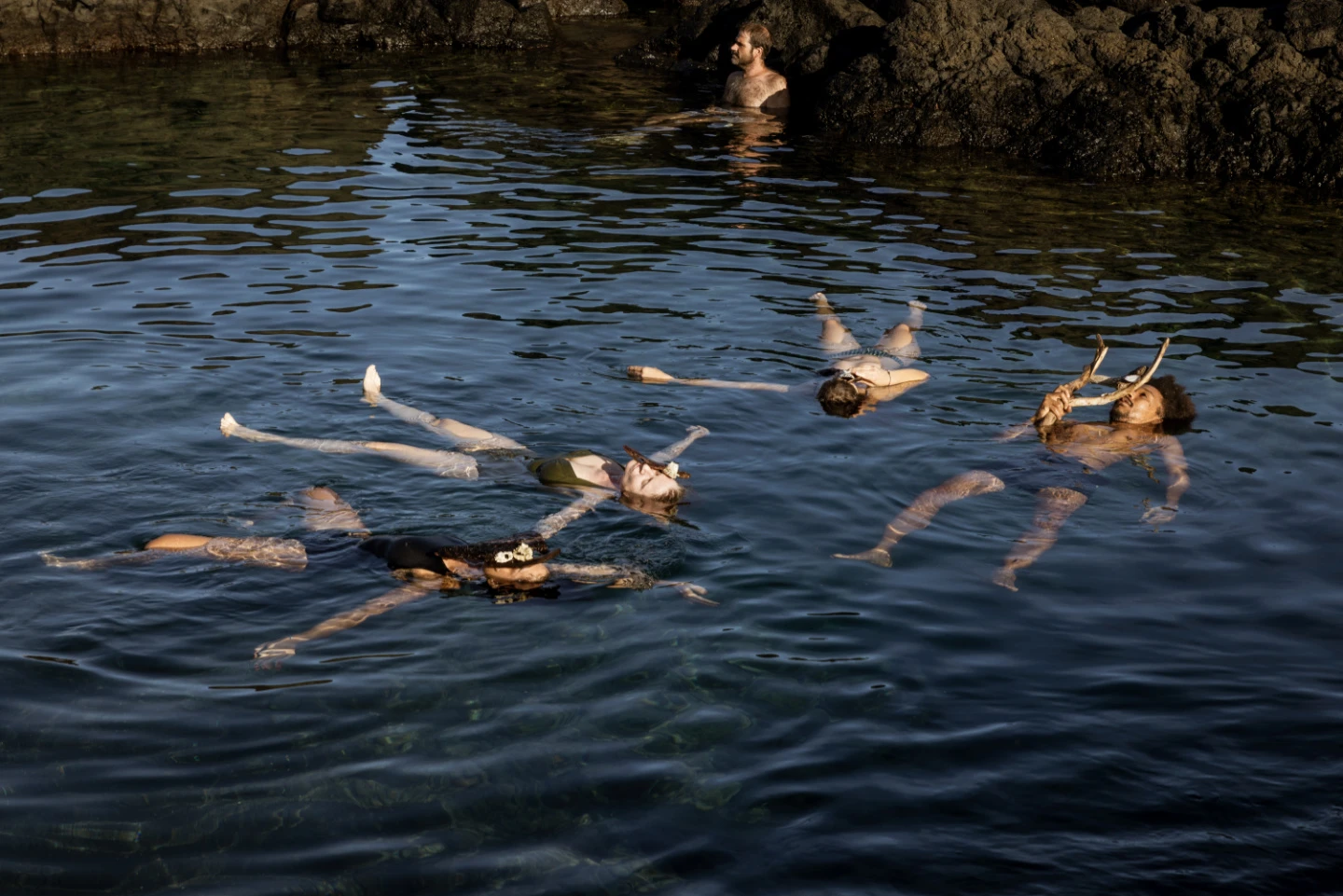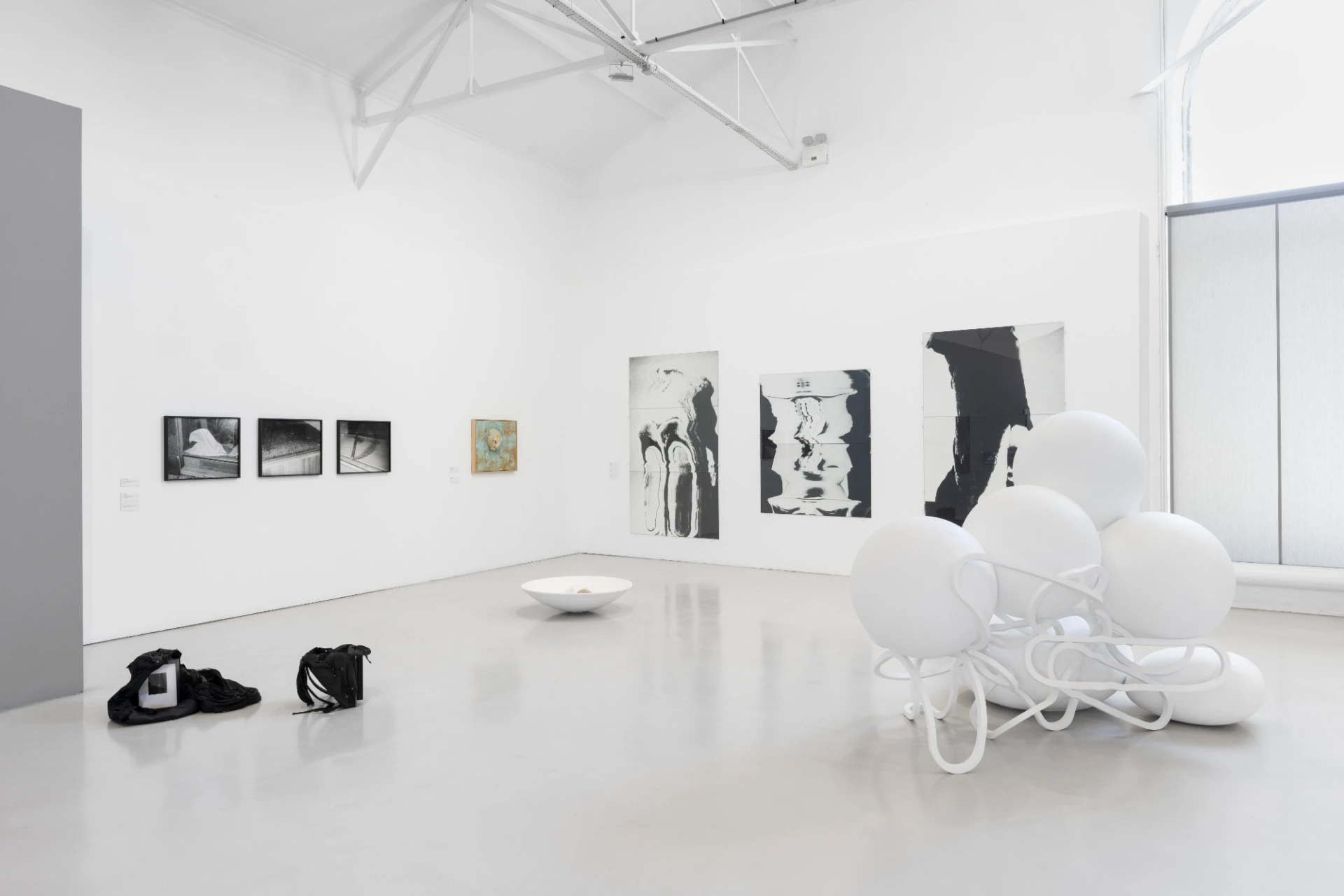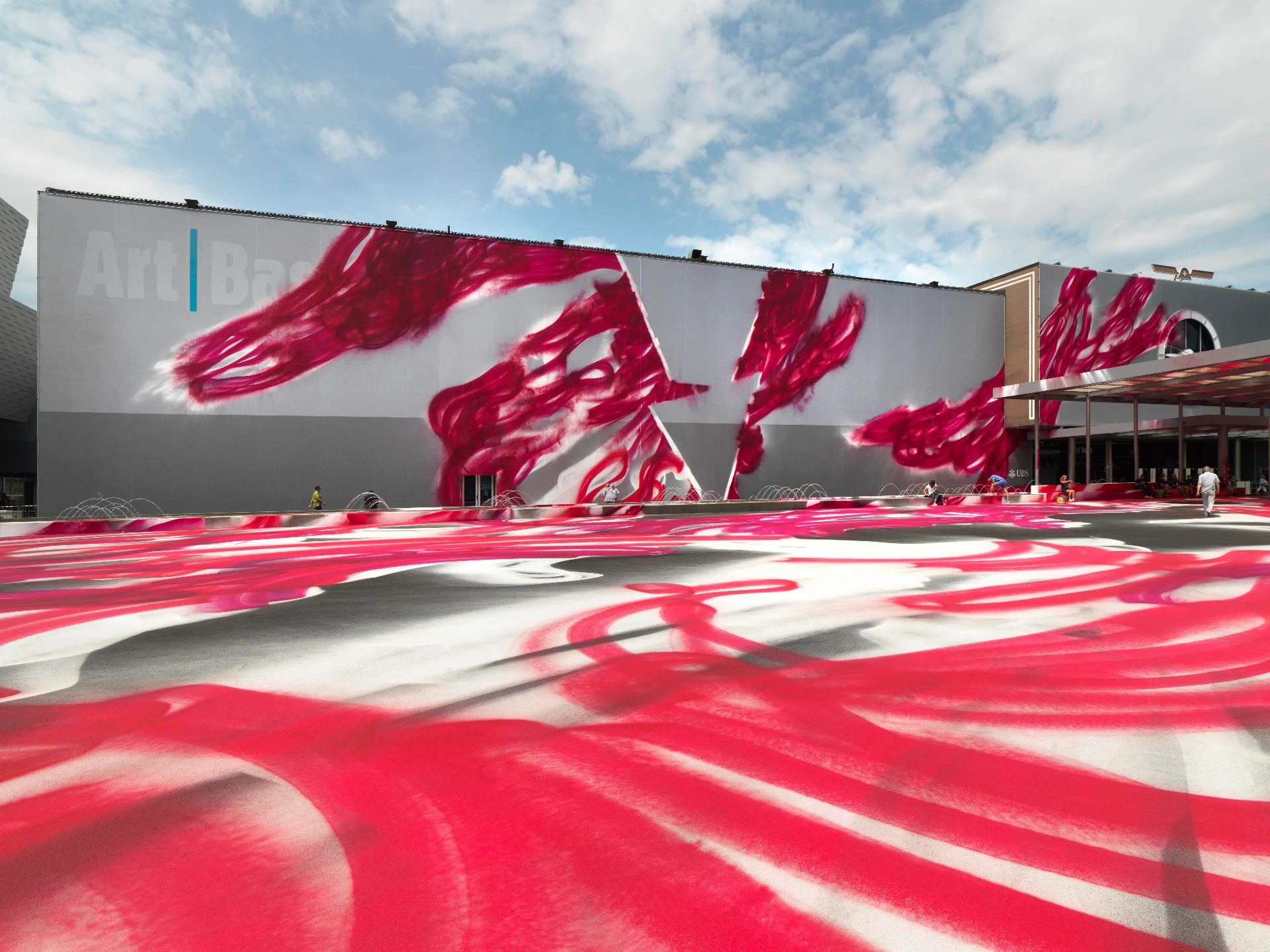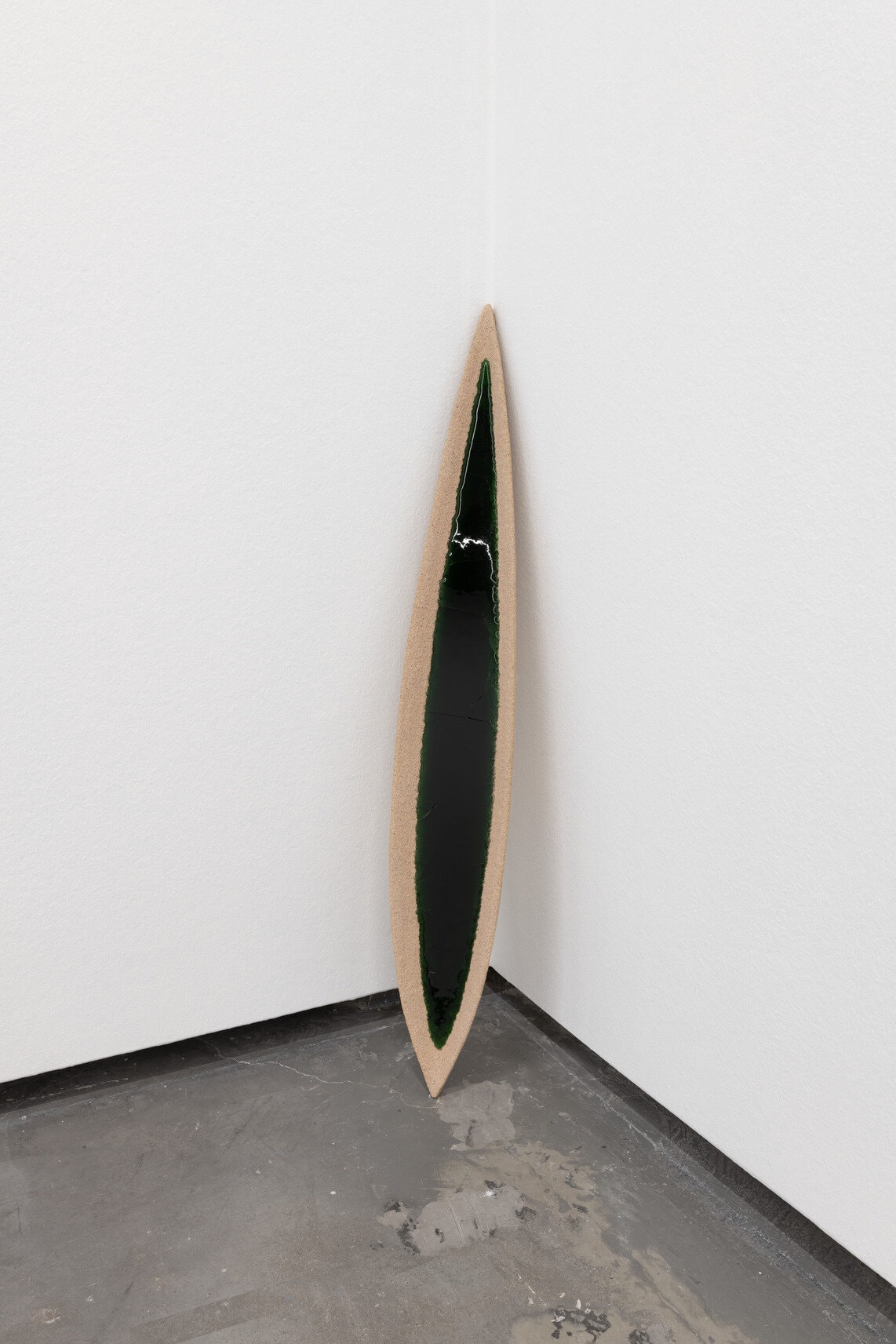article
The Art World, at Basel Art Week. Which world do we seek?
Every year, for a week in mid-June, the city of Basel, Switzerland, becomes an international art hub for galleries, collectors, and contemporary artists. I say this from a market perspective, because we rarely find this world - our world - represented there. I know that this doesn't have to be the role of art, to formulate a language of commonality, or to denounce contemporaneity, but I say this understanding that, today, its role is largely reduced to the representation of individuality, of personal concerns, rather than societal ones.
This condition is not new, even less so when we refer to art fairs, which seek (and create) trends that may please those who intend to collect, but this year in particular—of recognition of an ongoing genocide and live streaming on social media, facilitated by the European Union—alienation seemed to take center stage. But is it alienation when what we're referring to is the institution itself? The very core of investment and regulation of artistic production and circulation. The question that remains is, then, what can art do at fairs beyond the market? And what can artists, curators, and critics do beyond collectors? I also leave these questions to readers, as you won't find conclusive answers in this article I’m writing.
In fact, I'll be honest: I traveled to Basel unaware of the week in question, with the sole ambition of visiting a small gallery in Germany, near the border of this European capital of the art market. When planning the trip, I immediately realized that the week coincided with Art Basel, one of the largest and oldest contemporary art fairs, which was in its 55th edition. Since I'm not a collector, I only bought a ticket to the Unlimited section, where we no longer find the traditional organizational structure of one booth per gallery but rather a broad platform presenting a selection of over seventy large-scale works and performances. According to my local colleagues, this is the most important section to see at an event of such vast and infinite proportions. Later, I will return to Unlimited with due attention.
Days before leaving, I realized that, during that week, a series of other fairs, events, and festivals were taking place in the same city, orbiting the ecosystem driven by the maturity of Art Basel, benefiting not only from collectors but also from the artists, curators, and mediators who visit the fair in the Swiss cultural capital. I'm referring to the so-called satellite fairs (putting forward an idea of periphery in relation to the centrality that defines Art Basel's identity), namely: Liste Art Fair; June Art Fair; VOLTA Art Fair; Photo Basel; Africa Basel; and Basel Social Club. Unable to cover them all, I followed the advice of my peers living in the city and chose to dedicate my remaining time to visiting the Liste Art Fair, in its 30th edition, and the Basel Social Club, in its 4th.
In the days and weeks following the fairs, a series of articles began to emerge, such as 5 Outstanding Artworks at Liste Art Fair Basel 2025, or The Best Booths at Liste, among many similar ones. We immediately understand that the old, traditional obsession with an exhibition's failure and success is still very much present, especially regarding the art's form and style, rather than its discourse, which is relegated to the background. As we browse through the articles, descended from a dialectical lineage, we understand that the condition of alienation permeates the various agents involved, both present and absent, at the fairs. Some say it begins with the artist: "art nowadays has put the agony behind it," confesses T.J. Clark in an interview with Afonso Dias Ramos1 published this month, in the aftermath of a summer between the Universal Exhibition in Osaka and the endless rotating fairs. While I understand the statement, I also consider the accusation somewhat unfair. Is it really a lack of agony in the performance? Is it the curatorship that ignores this disposition? Or is it that we fail to recognize the "art" it deals with and that is intertwined with such a condition? Writing from a critical perspective, it is also worth revisiting the reflection of Maria Inés Plaza, editor and founder of the journal Arts of the Working Class, on the new responsibility of the art critic, where some blame may also lie: "What would it mean to analyze an exhibition [or fair] not by assessing its success or failure, but by posing the following question: what kind of world does this work seek to inhabit or propose?2" In a beautiful text entitled Art Critique as Midwifery of a Shifting Consciousness, Plaza calls for a critique that moves away from a notion of judgment, of judgment, and approaches a practice of mediation, similar to that of a doula, attending to and supporting what is still becoming language. In other words, critiquing as a doula opens space for what is emerging, rather than forcing clarity. The question ceases to be about what a given work says, but about what it attempts to create. And what does it take for me, the critic, to do to support this process? This is what critics can do. And what they can do allows us to move beyond mere description and categorization to the construction of a counter-public3 sphere.
From this point of view, or rather, this methodology, which is attentive and takes care of what is still becoming, I return to questioning what the arts can do, at fairs, beyond the market, and what can artists and curators do, beyond collectors?
We begin from the center, from what today represents the canon, from Art Basel. Despite this, we begin from the Unlimited core, less conventional, yet guided by the monumental, which immediately reverts to privileged conditions of production and circulation. But that is not the critique I call for, one of judgment. While necessary, it is an already saturated approach, ill-equipped to truly deconstruct the processes of distribution of the sensible. In the opening paragraph, I suggested that, throughout Basel Art Week, a preference for representations centered around individual desires, whether material or conceptual, became clearly evident, leading us to question whether it is our world that we see represented throughout the festivals. I say our in the communal plural. But going beyond formal plasticity and the usual hermeneutics, looking and imagining together, perhaps we can conceive of what world(s) each artist and curator intends to propose beyond what collectors value.
I'll take you across Messeplatz to the entrance of Art Basel Unlimited, punctuated by a large, expansive site-specific installation by Katharina Grosse, which its institutional discourse claims to explore the possibilities of painting, it ultimately appears to be much more than that. When was the last time you walked through graffiti? Or rather, when was the last time you ignored graffiti? Perhaps this is a wake-up call to what can no longer be ignored. T.J. Clark tells us that there is no longer agony in art, but perhaps we should rethink what art is and what it might be becoming. Thinking about what has not yet been institutionalized may be where the agony ultimately resides. The walls of contemporary cities are currently filled with agony: we just need to be attentive and let go of the demagoguery.
Already within the venue, a gaze toward the future, through the past, was also recognizable, primarily addressing the formal languages of the 20th-century avant-garde and neo-avant-garde movements. In the same article, T.J. Clark argues that "the present will not recognize its agony until it comes to terms with this past it imagines itself to have overcome." Well, several of the artists represented seem to warn of a past that is being extended beyond the present, into the future. These are, to be sure, subtle and somewhat timid references, but do we need clarity? Or critical tools? In real life, where art should reside, the evidence is not so clear either. From the spatial negotiations of Claudia Comte (Temporal Drift, 2025), to the neo-surrealist landscapes of Didier William (Gesture to Home, 2024) and Luis Zerbini (Os comedores de Terra, 2025), to the enormous neo-constructivist canvases of Erik Bulatov (Вперед/Forward, 2015-2016) – there are indeed worlds to be critiqued. What they seem to propose are the very critical tools that progressively elude us in the process of alienation.
Moving on to the Liste Art Fair, in the same pavilion, we enter a less traditional environment, designed to showcase emerging artists and non-repeating galleries. Here, and still on the same topic, curator Nikola Dietrich confesses to us what we had already understood regarding what representations of individuality propose to the community: "What can be perceived is an approach to social changes in a very personal, poetic, and political way. The artists reflect on social processes, cultural overlaps, issues of identity, corporeality, memory, or space. And this happens in various forms: from figurative painting to installations, sculptural, or text-based works. Many of the works follow an urgent content and open new perspectives, whether through queer readings, decidedly political visual strategies, the reappropriation of cultural practices considered lost, or the visibility of marginalized experiences4." And this is truly the reality. Formally, some criticized any return to the figurative, but wasn't clarity the imperative objective? Aside from that, photography, the written word, and subjective language seem to have been the focal points. Georg Gatsas, represented by Jubg, brought us poetry at gunpoint, where the everyday is threatened through digital shooting. Aki Hassan, with Yeo Workshop, rethinks love letters as rhythmic5 scores. Jonas Staal, shown by Laveronica, imagines burning yachts and calls for a redistribution of extinction. And Marietta Mavrokordatou, with Brunette Coleman, questions Anthropocene scales through microscopic lenses. There's a concern with proposing other realities, just part of individuality.
Finally, it would be impossible not to mention the Basel Social Club. Admission is free, it's important to emphasize. Renowned for occupying abandoned or unused spaces in the city and surrounding areas, this year it took over a former private bank in Basel's historic center, transforming it into an immersive tableau vivant. In a labyrinthine scheme, we wander through the various floors, rooms, attics, vaults, bathrooms, and closets where art, life, and performance intertwine in a way that prevents us from separating them again. The room attendants, adorned with t-shirts that scream "Burn Galleries, not Calories!" are constantly performing (or are they?). I remember the employee who greeted the crowds in the entrance hall, with a vacuum cleaner that cleaned up every footprint while filming himself, an obsessive behavior that achieved nothing. The girls who read texts from a toilet, with the door ajar. The glass-walled support rooms, where the attendees ate lunch, left us wondering whether we were witnessing an extension of the performances or whether it was actually life, visible, amidst the art. A sofa piled with coats, among works by Man Ray and Nan Goldin, made us question the same. The line between art and life was completely blurred. So, just around the corner from an exhibition room, we found the opportunity to enter a sauna and soak in ice baths; get tattoos; donate blood; get a haircut; and buy balloons like those reproduced by Jeff Koons, for just one euro.
The fair/festival, which, four years ago, when it opened, attracted a younger audience by offering an alternative program to the large, conventional fairs, now also attracts everyone else who travels for precisely these same traditional events. It thus becomes quite clear what the arts can do at fairs, beyond collectors. They can do just that: turn toward life and community, by communicating (and communicating well) outside the white cube, through performativity and ambiguity—that is, without the fixity of movements and meanings.
I conclude by quoting Jenny Holzer, who welcomed us, through her electronic tracks, in a room she shared with Franz Burkhardt, where a graffitied bus stop begged us to throw art in its trash can. Holzer, with a work from 2005, but always attentive to what is becoming and in agreement with our desires regarding individualistic artistic languages, warns: "Spending too much time on self-improvement is antisocial."
The contemporary art fairs Art Basel, Liste Art Fair and Basel Social Club took place in Basel between June 15 and 22, 2025.
1 https://electramagazine.fundacaoedp.pt/editions/edicao-29/t-j-clark-nos-dias-de-hoje-arte-deixou-agonia-para-tras
2 https://artsoftheworkingclass.org/text/art-critique-as-midwifery-of-a-shifting-consciousness
3 The counter-public sphere is described as the disorganisation of the (post)modern, bourgeois-liberal social experience of the masses. Cf. Kluge, A., & Negt, O. (2016). Public sphere and experience: Analysis of the bourgeois and proletarian public sphere. Verso Books.
4 https://artsoftheworkingclass.org/text/30-jahre-liste
5 Pre-Platonic conception of rhythm that rejects repetition.
BIOGRAPHY
Benedita Salema Roby (b. Lisbon) has a degree in Art History (2019) and a master's degree in Aesthetics and Artistic Studies (2022) from the Faculty of Social Sciences and Humanities of Universidade Nova de Lisboa with the dissertation ‘Graffiti: Considerations on the Aesthetics of Transgression in the Public Space of the City’. She is currently doing her PhD in Artistic Studies - Art and Mediations at the same institution, where she is developing a research, with funding from the FCT, centred on the potential for societal and collective liberation around transgressive (artistic) practices such as graffiti and political graffiti. On this theme, she also participates in the making of documentaries and organises workshops on practice and thought for young people. Her thesis project, entitled ‘The Deconstruction of the (Experience of the) City and the Construction of the Counter-Public Sphere: Transgressive Creative Writing, Aesthetics and Politics’, is supervised by Cristina Pratas Cruzeiro and Joana Cunha Leal. As well as academic publications, he writes about emerging artists and visual and performing arts exhibitions for independent magazines such as Umbigo and Sem Título.
ADVERTISING
Previous
article
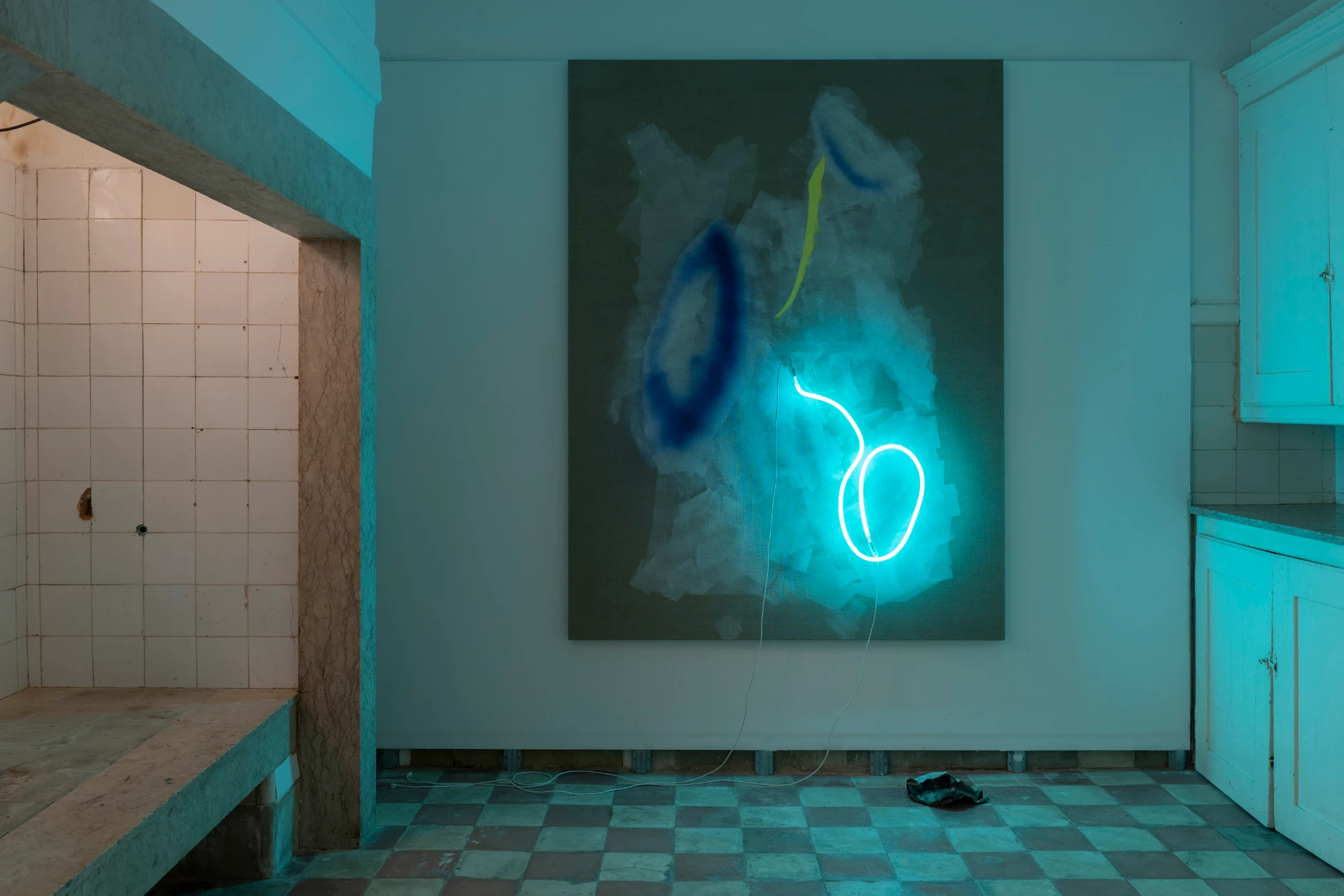
15 Jul 2025
In the Mouth of a Flowering Ghost at Figura Avulsa
By Katya Savchenko
Next
article
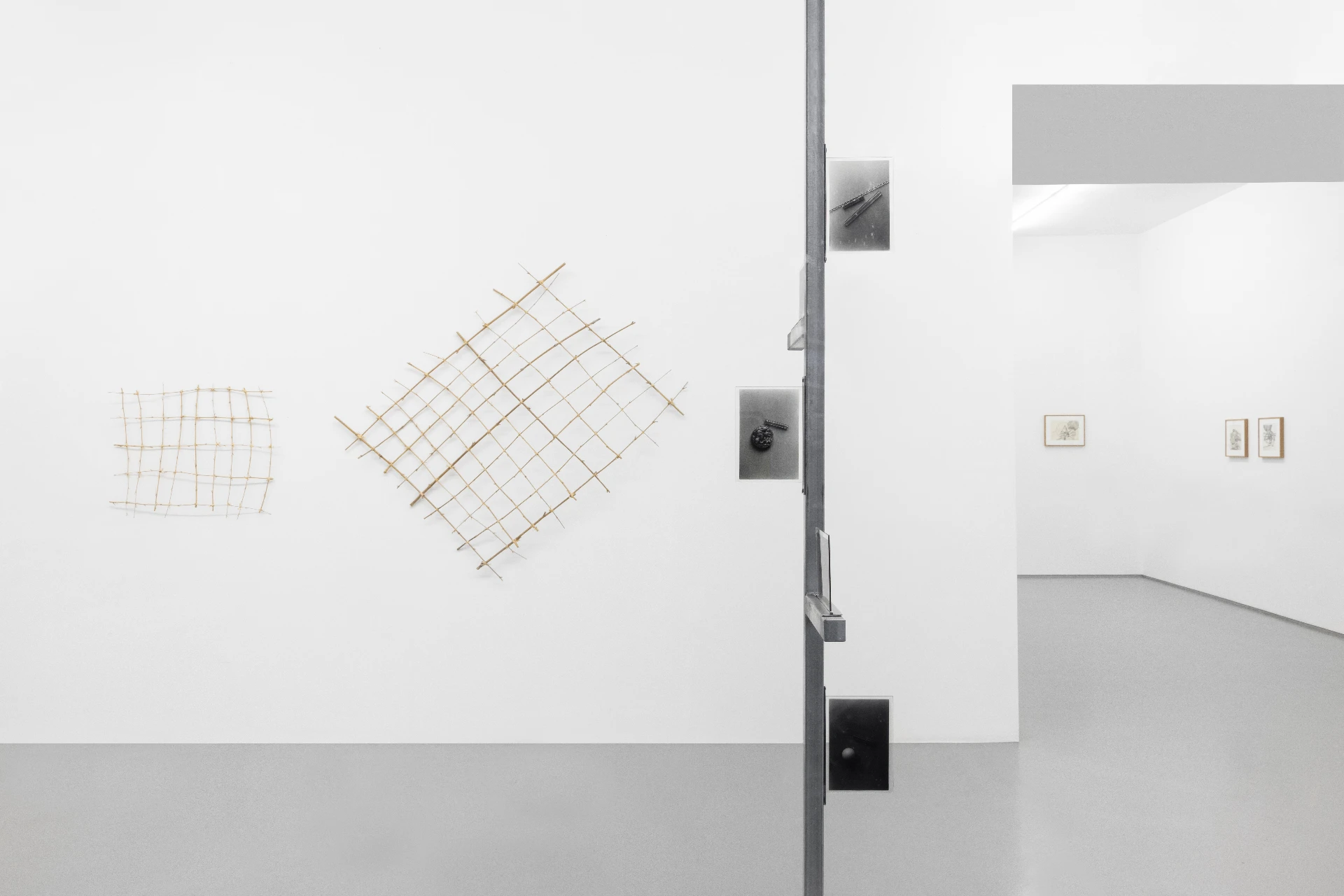
16 Jul 2025
The Branches of Life: Vivenciar at 3+1 Arte Contemporânea
By Tomás Camillis
Related Posts
